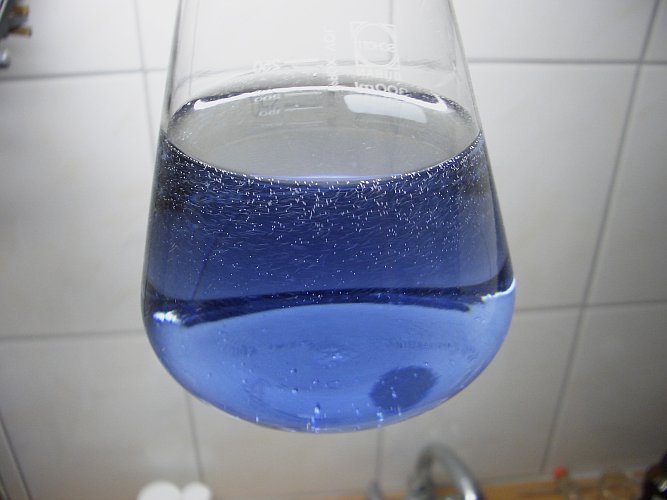


Beautiful effects with potassium dichromate
Potassium dichromate dissolves in water quite well, but it is not hygroscopic at all. Even stronger, the solid seems to be somewhat hydrophobic, and if the pieces of potassium dichromate are not too large, then they are not fully wetted and they remain floating on the surface of the water. At the bottom part, then these crystals dissolve and at the top part they remain dry.
This effect is best observed with crystals with sizes somewhere around 0.5 mm. Too large crystals immediately sink to the bottom, too small crystals too quickly dissolve and the effect cannot be observed nicely. The solution of potassium dichromate has higher density than the water around it, and the solution sinks to the bottom, giving a nice effect.
A video shows the effect, described above. Click on the picture below to see the video of the dissolving of the potassium dichromate. Download size is approximately 1.5 MByte. The picture below shows a frame from the video and it nicely shows the yellow/orange solution sinking to the bottom.
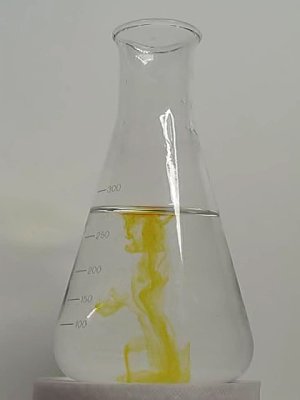
![]()
Even better results, with hydrogen peroxide
A really nice effect is obtained, when hydrogen peroxide and acid is added to the water, before the potassium dichromate is added. Again, the potassium dichromate dissolves, but now the dichromate reacts with the acidic peroxide to give the deep blue complex CrO5.
The concentration of the hydrogen peroxide must be very low, somewhere at 0.1% or so. The concentration of acid (any strong acid will do, such as sulphuric acid, or hydrochloric acid) also must be quite low, somewhere around 1%.
Two videos were made of this experiment: video1 and video2. Each video has a download size of approximately 7 MByte. The pictures below show how the solution of the blue peroxo complex sinks to the bottom. The right picture also shows that just after dissolving of the potassium dichromate, not all of this is converted to the blue peroxo complex. The conversion takes some time.
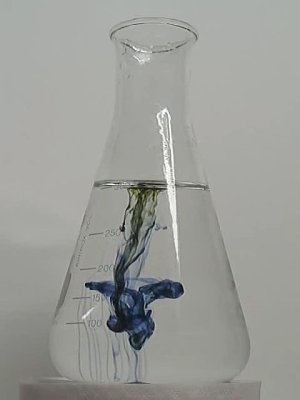
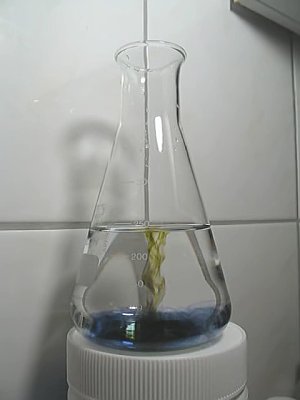
Another nice effect is obtained, when hydrogen peroxide is added to an acidified solution of potassium dichromate, created in a similar way, as shown above. For this experiment, simply make a 1% acid solution, and add some crystals of potassium dichromate to this. Wait for a while, and then add a ml or 2 of 3% hydrogen peroxide. Again, a video was made. Download size of this video is just over 2 MByte.
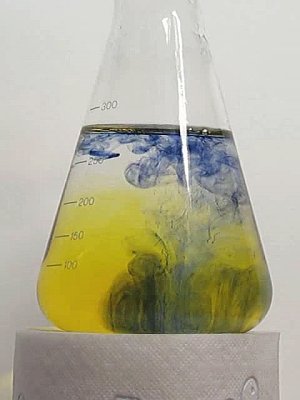
All these demonstrations are based on the reaction of dichromate with hydrogen peroxide in acidic medium. The peroxo complex CrO(O2)2 is formed under these conditions. This complex is deep blue. This complex, however, is unstable and quickly decomposes, giving oxygen, and formation of chromium(III) ions. The color fades away, and after swirling the solution, and waiting for 10 minutes, the color has shifted to a pale green/gray.

![]()
Overview of the reaction, pictures every 2 minutes
The experiment was repeated, but now pictures were taken every 2 minutes, to show what happens with the peroxo complex and the dichromate. Below follow the pictures from this sequence.
A few seconds after adding solid potassium dichromate, and 2 minutes later.
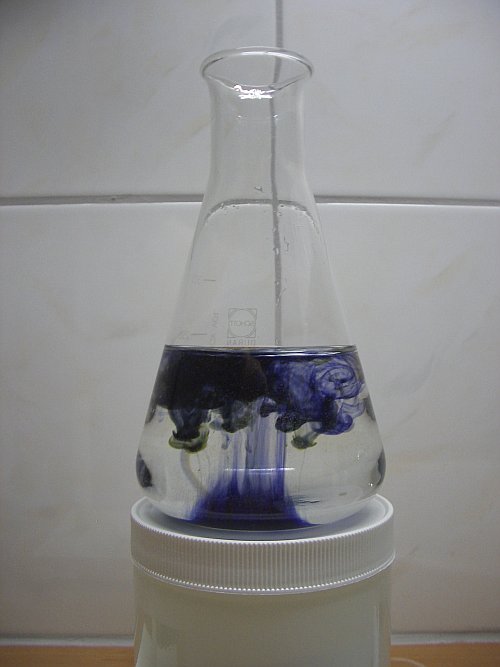
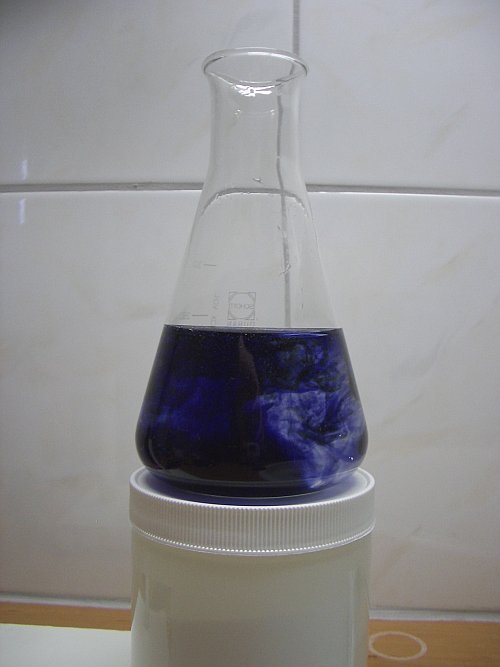
Again one minute later, and two minutes later. The picture shows bubbles of a colorless gas. This is oxygen, due to decomposition of the peroxo complex. The green color in the right picture is due to a mix of dichromate and the blue peroxo complex.
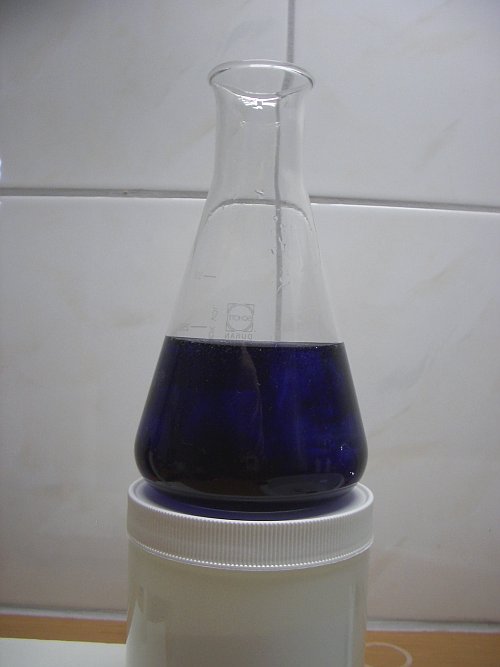
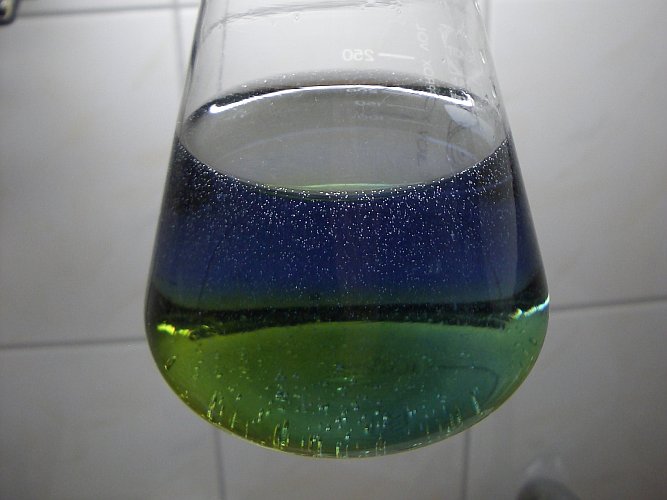
When the solution is swirled, then a homogeneous solution is obtained, with a beautiful blue color. This solution slowly releases oxygen bubbles all the time, and within a few minutes, the color has faded and a grey/green solution remains. Such a pale grey/green solution already is shown above.
